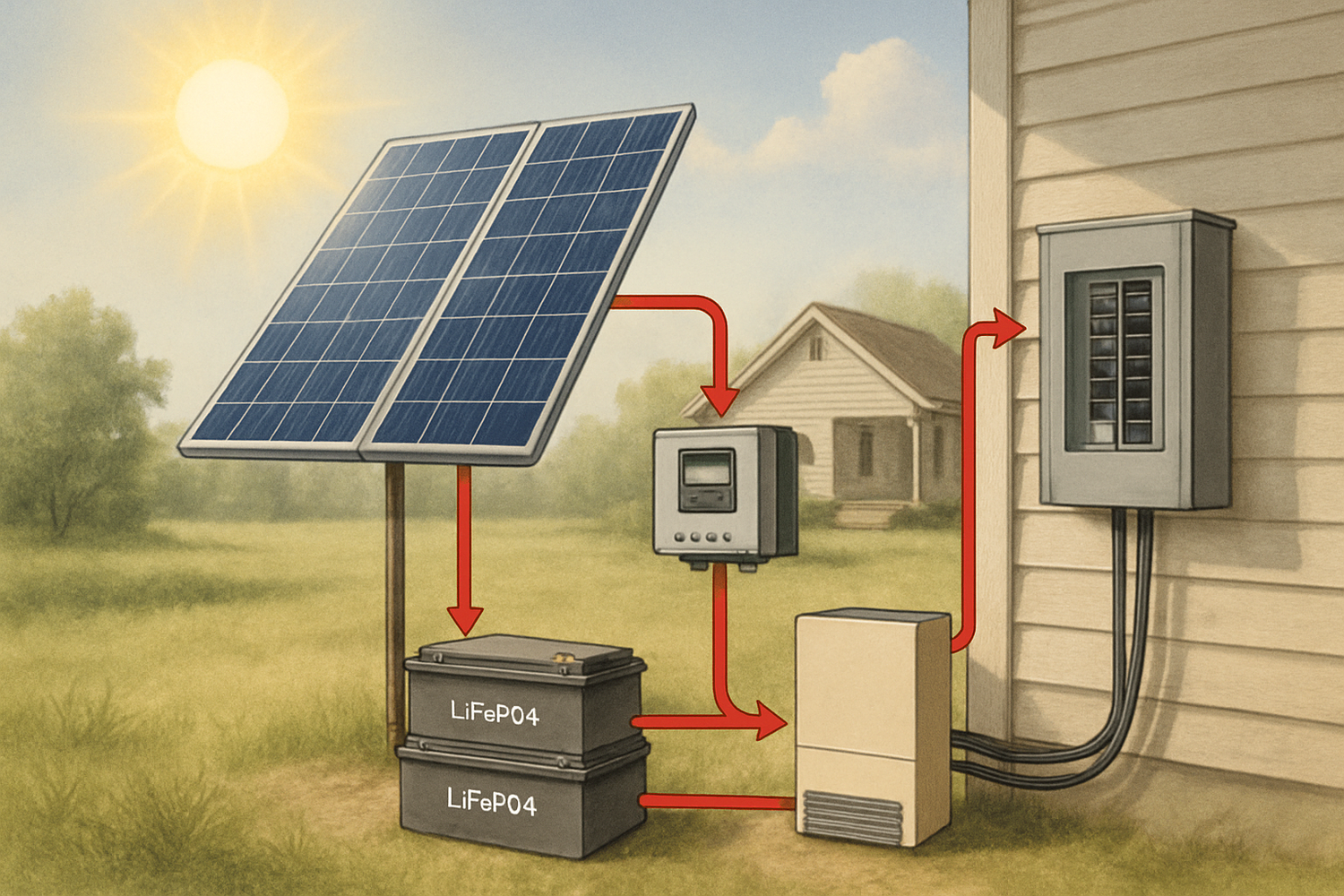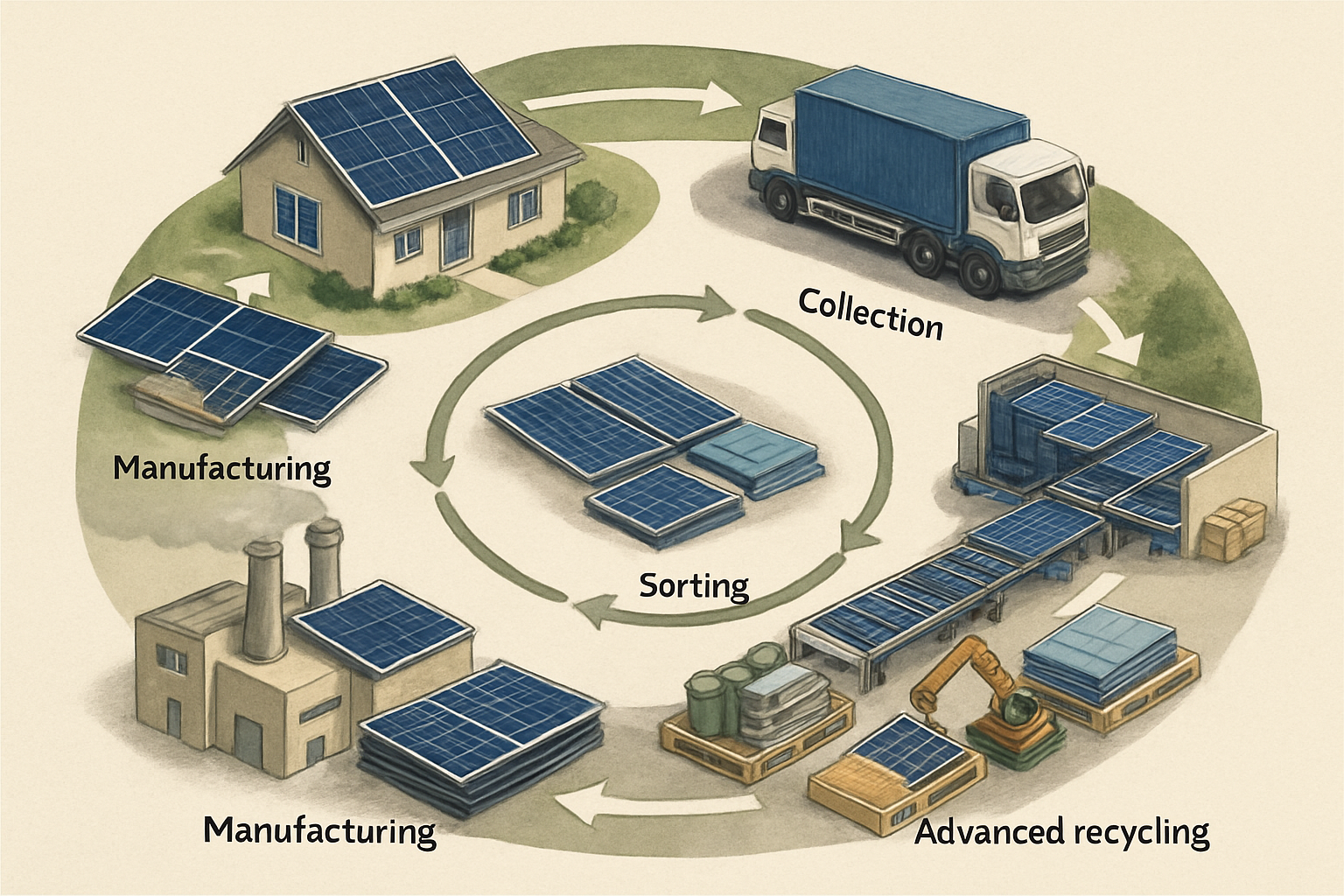Harnessing solar energy offers a path to energy independence and a sustainable future. As more homes and businesses turn to solar, a critical question emerges: how can we ensure these valuable solar panels perform optimally for as long as possible? The answer often lies beyond the panels themselves, in the intelligent integration of energy storage systems. Smart storage solutions, especially in off-grid setups and comprehensive energy storage systems (ESS), play a pivotal role in extending the operational life of your solar panels, enhancing system efficiency, and providing reliable power.
The Evolution of Solar Energy and Storage
The solar landscape has transformed significantly. Initially, solar photovoltaic (PV) systems primarily focused on feeding electricity directly into the grid. However, the demand for greater energy autonomy and resilience has driven innovation in how we capture, store, and utilize solar power.
From Grid-Tied to Off-Grid Independence
Off-grid solar solutions represent a complete break from traditional utility grids. These systems are vital for remote locations like farms, cabins, or homes where grid access is either unavailable or prohibitively expensive. In an off-grid setup, every component must work in harmony to ensure continuous power supply. Solar panels generate electricity, but without a grid connection, this energy needs immediate use or storage. This is where robust energy storage becomes indispensable. It captures excess solar production during peak sunlight hours, making it available during the night or on cloudy days, preventing energy waste and ensuring consistent power for your needs.
The Rise of Energy Storage Systems (ESS)
Energy Storage Systems (ESS) integrate various components, including batteries, inverters, and sophisticated control systems, to manage energy flow efficiently. These systems are not just for off-grid applications; they are increasingly common in grid-tied homes seeking greater self-consumption and backup power. The International Energy Agency (IEA) highlights that installing battery storage with distributed solar PV can effectively increase self-consumption and reduce reverse power flows into the local grid by shifting produced energy. Next Generation Wind and Solar Power (Full Report). This shift empowers you to use more of the clean energy you generate, reducing reliance on grid electricity and offering a buffer against power outages.

Maximizing Panel Longevity with Smart Storage
Solar panels are designed for durability, often coming with warranties spanning 25 years or more. However, various factors can influence their actual performance and lifespan. Smart storage solutions offer a proactive approach to mitigating these challenges, helping your panels maintain peak efficiency for longer.
Understanding Solar Panel Degradation
Solar panels naturally degrade over time, typically losing a small percentage of their output capacity each year. This degradation can accelerate due to environmental stressors like extreme temperatures, UV exposure, and physical wear. Inconsistent power demands or sudden fluctuations in energy flow can also stress the PV modules. For instance, without storage, panels might experience rapid cycling of power output if demand varies sharply, potentially leading to micro-cracks or other forms of wear over time. The IEA notes that while the magnitude remains limited, solar PV is increasingly being used with battery storage, which can help address shifts in peak demand and some of the resource’s variability concerns. Status of Power System Transformation 2018 - Technical Annexes.
How Smart Storage Mitigates Stress
Integrating a smart storage system creates a buffer between your solar panels and your energy consumption. Instead of directly feeding variable power to your home or the grid, the panels charge the battery bank. This allows the panels to operate at a more stable and consistent output level, reducing the stress from sudden load changes or intermittent grid demands. By smoothing out the power curve, smart storage minimizes thermal cycling and electrical fluctuations that can contribute to panel degradation. This consistent operation helps preserve the integrity of the solar cells and wiring, contributing to a longer, more reliable panel life.
Key Technologies in Smart Storage for Panel Life Extension
The effectiveness of a smart storage solution heavily depends on the quality and integration of its core components. Advancements in battery technology and inverter systems are central to extending panel life and achieving energy independence.
Lithium Iron Phosphate (LiFePO4) Batteries
Lithium Iron Phosphate (LiFePO4) batteries stand out as a superior choice for solar energy storage. They offer exceptional performance, safety, and reliability compared to other battery chemistries. LiFePO4 batteries boast a longer cycle life, meaning they can be charged and discharged many more times before their capacity significantly diminishes. This durability makes them ideal for daily cycling in solar applications, ensuring a stable energy reservoir for your system. Their thermal stability also contributes to overall system safety and longevity, providing a robust foundation for your energy storage needs.
Hybrid Inverters and Integrated ESS
At the heart of an efficient smart storage system is the solar inverter, especially a hybrid model. A hybrid inverter combines the functions of a traditional solar inverter and a battery inverter into a single unit. This integration simplifies system design and optimizes energy management. It intelligently directs solar power to where it's most needed: charging batteries, powering your home, or feeding excess back to the grid. In an integrated ESS, the hybrid inverter works seamlessly with LiFePO4 batteries and solar panels, creating a cohesive unit that maximizes energy harvesting and minimizes waste. This intelligent management ensures that your panels operate under optimal conditions, contributing directly to their extended lifespan and consistent performance.
Practical Applications and Real-World Impact
The benefits of smart storage extend across various applications, from empowering remote living to enhancing urban energy resilience.
Off-Grid Scenarios: Farms, Cabins, and Remote Homes
For off-grid homes, farms, and cabins, smart storage is not just an enhancement; it is a necessity. Imagine a remote cabin relying solely on solar power. Without adequate storage, cloudy days or nighttime hours would mean no electricity. An integrated off-grid solar solution with LiFePO4 batteries ensures a continuous power supply, making these locations truly self-sufficient. This reliability means you can power essential appliances, lighting, and communication systems without interruption. It also allows your solar panels to operate steadily, charging the battery bank, rather than experiencing frequent on/off cycles due to fluctuating demand, which protects the panels from undue stress.
Enhancing Grid Resilience and Self-Consumption
Even for grid-tied properties, smart storage systems offer significant advantages. By storing excess solar energy generated during the day, you can use it during peak evening hours when grid electricity rates are often higher. This practice, known as increasing self-consumption, reduces your utility bills and lessens your reliance on the grid. Furthermore, in the event of a power outage, your ESS can seamlessly switch to providing backup power, keeping your lights on and critical appliances running. This enhanced grid resilience offers peace of mind and greater control over your energy supply. The IEA emphasizes that battery storage systems, in conjunction with distributed solar PV, can effectively increase self-consumption and reduce reverse power flows into the local grid. Next-Generation Wind and Solar Power.
Consider the following comparison of system types:
| Feature | Grid-Tied (No Storage) | Off-Grid Solar with Smart Storage | Grid-Tied with ESS |
|---|---|---|---|
| Energy Independence | Low | High | Medium to High |
| Backup Power | None | Full | Partial to Full |
| Panel Operating Stability | Variable | High | High |
| Self-Consumption | Low | High | High |
| Grid Reliance | High | None | Low |
Looking Ahead
The integration of smart storage solutions with solar panels represents a significant step forward in sustainable energy. By providing stable operating conditions, optimizing energy flow, and offering reliable power, these systems not only enhance your energy independence but also play a crucial role in extending the effective life of your solar investment. As technology continues to advance, we can anticipate even more sophisticated and efficient storage solutions, further solidifying solar energy's position as a cornerstone of our energy future.
Frequently Asked Questions
What is the typical lifespan of a solar panel?
Most solar panels come with a performance warranty of 25 years or more, guaranteeing a certain percentage of their initial power output. With proper installation and maintenance, many panels can continue to produce electricity beyond this period, often for 30 years or even longer.
How do LiFePO4 batteries compare to other battery types for solar storage?
LiFePO4 batteries offer several advantages for solar storage, including a longer cycle life (typically 6,000+ cycles), higher safety due to their stable chemistry, and a wider operating temperature range. They are also lighter and more compact than traditional lead-acid batteries, making them a preferred choice for modern energy storage systems.
Can I add smart storage to an existing solar panel system?
Yes, in many cases, you can retrofit an existing solar panel system with smart storage. This often involves adding a hybrid inverter and a battery bank. A qualified solar professional can assess your current system and recommend the best integration strategy to maximize your benefits.
Disclaimer
The information provided in this article is for general informational purposes only and does not constitute professional advice. While we strive to provide accurate and up-to-date content, we recommend consulting with qualified professionals for specific guidance regarding solar energy systems, installations, or financial decisions.





Leave a comment
All comments are moderated before being published.
This site is protected by hCaptcha and the hCaptcha Privacy Policy and Terms of Service apply.